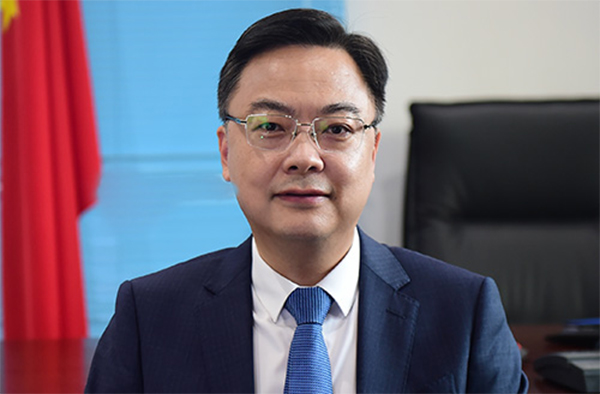05/06/2024
05/06/2024
Recently, some people in the world concocted the so-called “Chinese overcapacity” narrative, and some countries even used this narrative as a tool to make groundless accusations against China. As regards the issue of production capacity, an objective, dialectical, and rational analysis of this issue through a market and global perspective and based on the laws of economics will make it easy for us to find that the so-called “overcapacity” is untenable and ill-intentioned. In contrast, amid the ongoing transformations unseen in a century in the world, the high-quality production capacity of China has been providing impetus for sustained global economic recovery. It is an important force for the transformation and upgrading of the world economy and a major driver of deepening China-Kuwait cooperation.

China’s high-quality production capacity comes from full market competition. The global market share gained by a nation’s specific sector is mainly the result of its efforts to utilize domestic resources, leverage its competitive edges, and pursue mutually beneficial cooperation. China’s advantages in electric vehicles and other emerging sectors are attributed to its supersized market, the full-fledged industrial system, and rich human resources. These advantages also hinge on enterprises’ heavy investment in R&D and innovation and entrepreneurs’ unremitting efforts. In sharp contrast, a few countries have been increasing subsidies to their new energy industries. Under the Inflation Reduction Act issued by the U.S. in 2022, a customer buying a new energy vehicle manufactured in the U.S. may qualify for up to $7,500 tax credit. From March 2022 till the end of that year, the European Commission has approved over 1,000 State aid policies of 27 Member States, worth up to 600 million Euros. It is unfair to accuse China of the so-called “unfair competition”.
What’s more, there is no so-called widespread or sustained “overcapacity” in China, nor is there any so-called “export of excess capacity.” In 2023, China’s industrial capacity utilization rate achieved growth quarter-by-quarter and was considered normal. Domestic sales of new energy vehicles accounted for 87.3%, whereas exports only accounted for 12.7%. This shows that while fully meeting the domestic demand, China is working actively to offer a wider range of high-quality products to customers of other countries across the world.
China’s high-quality production capacity is in the interest of green and innovative transition of regional and global economies. In the face of uncertainty in the world economy, China’s new energy industry, including electric vehicles and photovoltaic products, which have come a long way over the past decade, inject sustained momentum into inclusive economic globalization. The International Renewable Energy Agency’s report shows that in the past decade, the world average levelized cost for wind power and photovoltaic power has declined cumulatively by more than 60% and 80% respectively, thanks in large part to Chinese innovations, manufacturing, and engineering projects. Meanwhile, demand for new energy capacity continues to grow as a result of the increasingly severe global climate change. In this context, new energy products manufactured by China provide important support to such demand in the course of green and innovative transition of economies. By 2030, the world will need 45 million new energy vehicles, 4.5 times the level of 2022, and the global demand for new photovoltaic capacity will reach 820 GW, about 4 times that of 2022, according to the estimate of the International Energy Agency. China stands ready to work with other countries in the world to seize the opportunities in the great trend of the rapid advance of emerging technologies and add impetus to green and innovative transition across the globe.
China’s high-quality production capacity is conducive to the sustained economic and social development of Kuwait. Vigorous efforts to develop green industries, including new energy, are instrumental in helping Kuwait achieve sustained economic and social development. To follow the trend of green economic development across the world, Kuwait has presented the 2060 low-carbon strategy and sought to reach carbon neutrality by 2060. In addition, to meet the growing power demand and get well prepared for the possible power shortage, Kuwait has set the objective of generating 15 percent of electrical energy from renewable sources by the year 2030. In September 2023, H.E. Xi Jinping, President of the People’s Republic of China, and HH the Amir Sheikh Mishal Al-Ahmad Al-Jaber Al-Sabah witnessed the signing of multiple agreements on bilateral cooperation on various areas, including new energy cooperation, when they met in Hangzhou. We believe that as China’s Belt and Road Initiative and Kuwait’s Vision 2035 are better synergized, there is a larger room for China-Kuwait cooperation in the future, especially in such emerging sectors as photovoltaic power generation and electric vehicles. We will utilize China’s powerful manufacturing capabilities to elevate China-Kuwait cooperation in industrial and supply chains to higher levels. This will contribute to the sustainable development and diversification of Kuwait’s economy, boost social and economic development of both nations, and improve the well-being of the two peoples.
By H.E. Zhang Jianwei,
Chinese Ambassador to Kuwait


